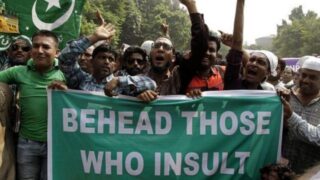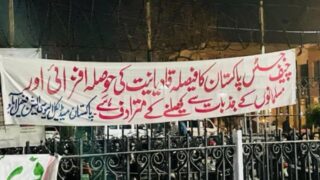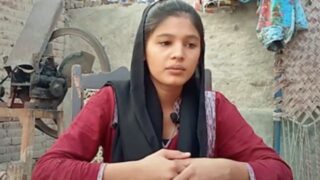From 2016, ISIS replaced Lashkar-e-Jhangvi as the deadliest anti-Hazara terrorist group. In 2020, Hazaras were accused of spreading COVID as the “Shi’a virus.”
by Massimo Introvigne
Article 5 of 5. Read article 1, article 2, article 3, and article 4.


Balochistan, as mentioned in our previous articles, has been home for decades to two deadly conflicts, one between Shi’a Hazaras and Sunni radicals, and the other between Balochi separatists and the national government. But a third complicated relation has manifested itself in more recent years, between Lashkar-e-Jhangvi (LeJ) and the Islamic State (ISIS), where the two groups went through phases of both rivalry and cooperation.
The story begins with the rivalry between al-Qaeda, with which LeJ has long maintained an alliance, and the Islamic State. Scholars of al-Qaeda acknowledge that these conflicts date back to the killing of the Jordanian terrorist Abu Musab al-Zarqawi (1966–2006) by an American targeted bomb attack on June 7, 2006, near Baqubah, Iraq. In theory, al-Zarqawi was an al-Qaeda commander. However, his massacres of Shiites threatened the unofficial but productive relationship between al-Qaeda and Iran. Several scholars regard as at least probable that al-Qaeda itself was at the origin of the information that was forwarded to the Americans and led to al-Zarqawi’s killing.
Al-Zarqawi was a charismatic leader, and his followers continued in Iraq under the name of ISIS (Islamic State in Iraq and Syria), which at that time was officially an al-Qaeda branch. However, dissent over the Shi’a question continued, and in October 2013 al-Qaeda leader Ayman al-Zawahiri ordered ISIS to disband. ISIS refused, and in 2014 proclaimed the restoration of the Islamic Caliphate and declared that al-Qaeda had betrayed the cause of jihad. Armed conflicts between al-Qaeda affiliates and ISIS followed, most notably in Syria.
While the Shi’a question had been a cause of the conflict between al-Qaeda and ISIS, in Pakistan al-Qaeda maintained its privileged relationship with the anti-Shi’a LeJ, for reasons mostly connected with al-Qaeda’s network of alliances in Afghanistan, and the mutual support between LeJ and the Taliban Pakistani affiliate organizations, which were also close to al-Qaeda.


In 2014, ISIS sent representatives to Pakistan. They visited local jihadist groups, and asked that they pledge allegiance to Abu Bakr al-Baghdadi (1971–2019) as the Caliph of all Islam. This effort was strongly resisted by the Taliban, while ISIS was able to recruit some Afghan Taliban defectors, and some in Pakistan who had quarreled with the Taliban.
From 2015, ISIS and the Taliban clashed in Afghanistan in a war within the war that produced heavy casualties. This created a problem for LeJ, which saw ISIS affirming its presence in Pakistan, carrying out its first attack by killing 43 Shiite bus passengers in Karachi on May 13, 2015, and being received with some sympathy by the most radical elements in LeJ’s network in Balochistan.
On October 24, 2016, three terrorists attacked the Balochistan Police Training College in Quetta, killing 61 cadets and wounding 165. Two terrorists killed themselves by detonating suicide belts and one was shot by the police. It was an anti-police and anti-government more than an anti-Hazara attack. Separately, both ISIS (who supplied to the media pictures identifying the terrorists) and LeJ claimed the attack. Another (and later) claim was sent to the media on behalf of LeJ “al-Alami faction.” It was unclear whether this meant that different factions of LeJ had separated, and only one of them was pro-ISIS. But it was even more unclear what to do of the different claims. While the Pakistani government claimed that ISIS had outsourced the attack to LeJ, international experts believed that ISIS was by then capable of operating independently in Pakistan.
What is clear is that since 2016, LeJ attacks became less frequent, although they did not disappear entirely, and most of the new deadly attacks against both the Hazaras and political or governmental targets in Balochistan were carried out by ISIS, which perhaps had recruited former LeJ operatives.
ISIS started operating against those it regarded as heretics in Pakistan with its trademark deadly effectiveness. One single 14-year-old suicide terrorist killed at least 52 and injured over 100 by detonating a suicide belt in the Sufi Shah Noorani Shrine in Khuzdar, Balochistan. Another 90 were killed and 300 injured by an ISIS suicide attack against the Sufi Shrine of Lal Shabaz Qalandar in Sehwan, Sindh.
While these ISIS attack targeted Sufis, and another that killed 149 in Mastung on July 13, 2018, during a political rally, attacked a party perceived as hostile to political Islam, soon Hazaras were targeted. They might not have been the reason of the attack to a polling station in Quetta on July 25, 2018, which killed 31, but the anti-Hazara motivation was clear when the Hazarganji vegetable market was targeted by a suicide bomber on April 12, 2019, and ten Hazaras were killed.
The anti-Hazara attitude of ISIS emerged even more clearly and deadly on January 3, 2021, when miners working in the coal mines of Machh, Balochistan, were attacked. The ISIS terrorists separated the Hazaras from the Sunni miners, took away 11 Hazaras, and killed them by slitting their throats. The incident generated widespread Hazara protests in Pakistan and throughout the world.


Meanwhile, Hazaras had found another enemy, COVID-19. The first patient diagnosed with COVID-19 in Pakistan, on February 26, 2020, had just returned from Iran, where he presumably had contracted the virus. Although whether he was a Shiite and had visited Iran for religious reasons was unclear, the rumor was immediately spread that Shiite pilgrims to Iran and Iraq were responsible for having brought the disease into Pakistan. The rumor was taken seriously by health authorities and politicians. The parts of Quetta predominantly inhabited by Hazaras, some of whom had returned from pilgrimages in Iran, were quarantined, and Hazara public servants were sent home on forced leave and tested. None of them tested positive. However, slogans about the “Shi’a virus” largely circulated on social media, and led to Hazaras being expelled from shops and restaurants.
What was left for the Hazaras was to organize themselves, both in Pakistan and the diaspora, to protest against both slander and terrorism. They did so effectively, and international observers have noted the key role of Hazara women in organizing networks of solidarity and protest.
However, the situation of the Hazaras in Pakistan remain precarious. After decades of suffering and killings, many of them now believe that only the international community may persuade the Pakistani government to protect them more effectively.









